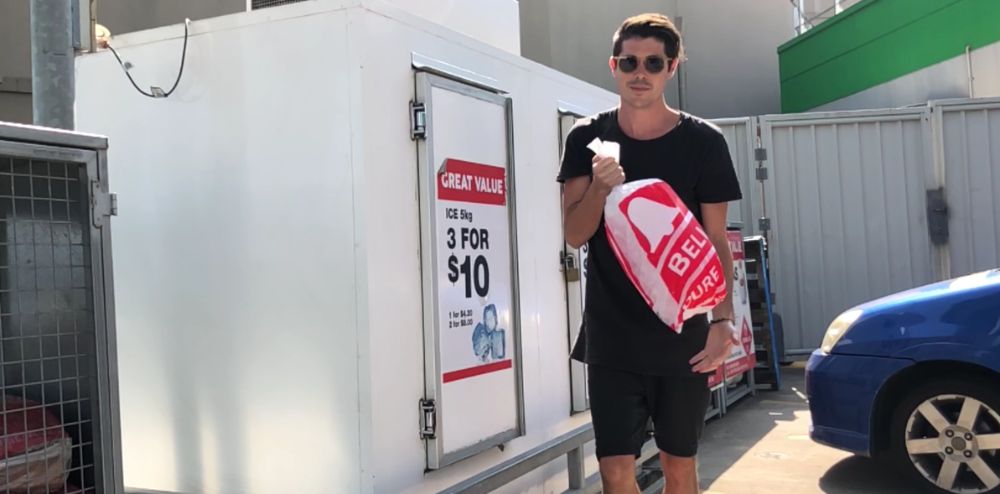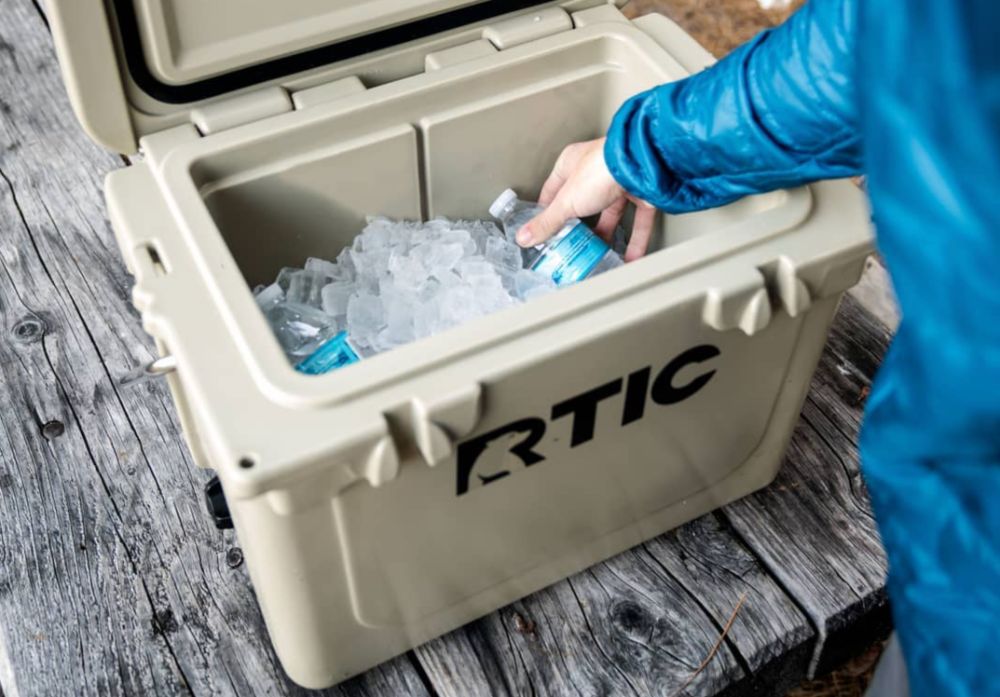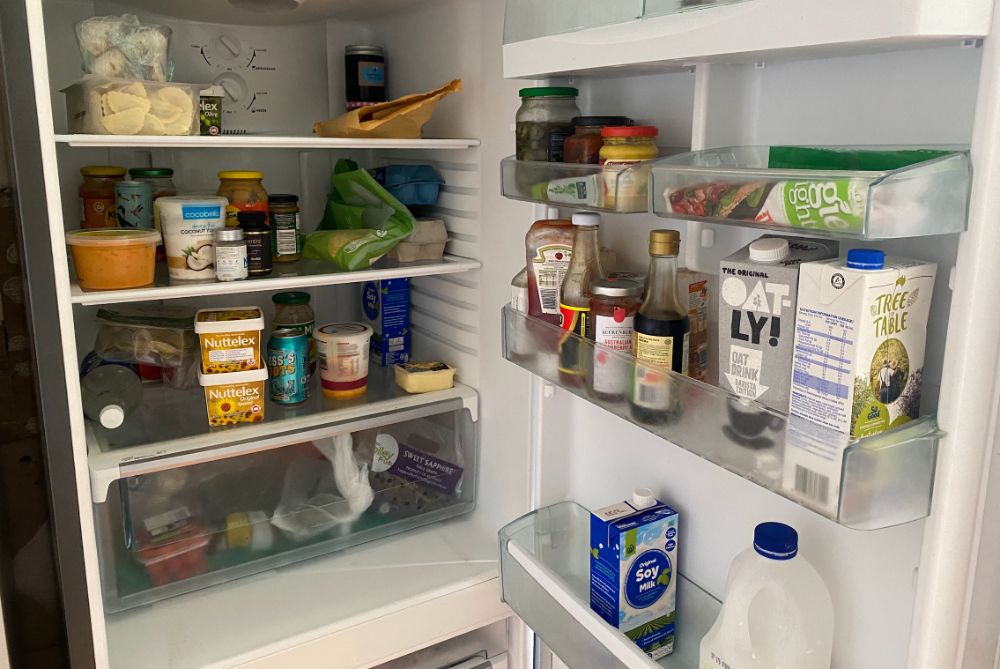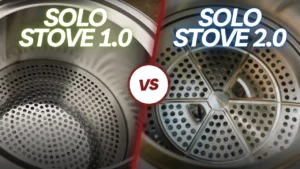A fridge breaking down is one of every homeowner’s worst nightmares. Refrigerators are expensive to replace and just as costly to repair.
Besides the huge bill you’re about to face repairing your fridge, you may also see money go down the drain as your cold foods spoil.
If your fridge breaks down, here are a few things that you can do to keep your fridge cool.
Ice, Ice Baby

Ice is going to be your best friend in this situation. You’ll likely need to pop into a local convenience store and purchase a bag of ice.
Refrigerators are essentially giant coolers. What do you put in a cooler to keep your drinks cold? The answer is ice. You can take a large bag of ice and stick it directly into the fridge.
The downside of a fridge compared to a cooler is that the doors are on the front so water can leak out. This means you need containers for your ice.
The bottom fresh food drawer container is a good spot to fill up with ice and place items most prone to spoiling in there.
Items that don’t need as much cooling, such as condiments, can be left on the door shelf of your fridge in this process. As the ice sits in the fridge, it will emit cool air.
You want to make sure that the fridge remains shut during this time. Whenever you need to grab something out of the fridge, reach in, get it, and shut the fridge door immediately.
If at all possible, make your home as cool as possible. This will decrease how much warm air gets into the fridge when you open the door to remove an item.
Use Dry Ice

An even better solution than using regular ice is using dry ice.
It's much colder than regular ice as -109ºF (-78ºC) and it also sublimates (or turns directly into gas) so you don't have to worry about any watery mess.
To keep items cold with dry ice when your fridge is broken you'll want to get 5-10 pounds of dry ice and place it on the top shelf of your fridge.
Cold air sinks so the cold from the dry ice will sink down through your entire fridge.
You can add extra blocks of dry ice to each of the shelves and it'll keep everything on that shelf colder than it otherwise would.
Dry ice is frozen carbon dioxide. This means it releases a lot of carbon dioxide as it warms up. This can be harmful to humans if you aren't careful.
So if using dry ice in your fridge to keep things cold make sure your kitchen (or wherever the fridge is) is well ventilated. Keep a window open or even place a place so air can disperse and there isn't a build up of too much carbon dioxide.
Use a Cooler Instead

When using regular ice as mentioned above, you will have to deal with the water from the ice as it melts. This can result in a bit of a cleanup job for you.
If you don’t want to have to mop up melted ice water, you can use a cooler to store your items until your fridge is repaired.
Fridges are also large spaces and the more air in a space the harder it is to keep it cold with ice.
If your fridge is also your freezer, you face the threat of your frozen goods thawing out when your fridge is on the fritz. For these items, it’s recommended to place them in a tightly sealing cooler with ice.
As the ice in the cooler melts, drain the water inside and add in fresh ice. This will keep your items consistently cool and will stop everything getting wet and soggy.
Making Some Hard Choices

Most coolers aren’t large enough to house an entire fridge’s worth of food. You may need to make some tough decisions about which items go in the cooler and which ones are going to be left to possibly perish.
Items that will definitely spoil without refrigeration should be first in line. This includes dairy products, raw meat, and anything frozen.
Condiments that are sauce- or oil-based can be left in the fridge to survive on any remaining cool air present, but anything mayonnaise- or cream-based should be thrown into your cooler.
Eggs don’t have to be refrigerated, although they usually are to keep them fresh for longer. You can leave them out on the counter or in the fridge.
Any leftovers or already prepared foods should be cooked up and eaten as soon as possible. These items will spoil without refrigeration, but you can eat them now to save room in the cool for the things that really need it.
Fruits and vegetables can also be left to fend for themselves. Again, they don’t necessarily require refrigeration, but keeping them cold makes them last longer.
Make Use Of Your Deep Freezer
If you’re fortunate enough to have a freezer separate from your refrigerator, it’s time to put that thing to good use.
Almost anything can be frozen and thawed out later. Dairy items can successfully be frozen and thawed out for later use with little complications.
Various drinks can be frozen as well. Canned sodas should not be frozen because they will burst at their seams as the ice crystals expand inside of the can. Thankfully, canned sodas won’t spoil if they become room temperature, so leave them in the fridge or on your kitchen counter.
You may need to remove some items from your freezer to make room for your perishables. This is a great excuse to do a bit of spring cleaning.
While freezing is a great way to store food long term, it doesn’t make food magically last forever. If there’s any food in your freezer that is over five years old, you need to throw it away.
If you store items from your fridge in your freezer, you will need to thaw them back out later. Once your refrigerator is repaired or replaced, place the items back in the fridge. Allow everything to thaw out overnight under refrigeration.
If you attempted to thaw out milk, for example, at room temperature because you want to hurry up and use it, the milk could take on an odd texture and semi-curdle. Thawing at room temperature isn’t recommended because it creates an uneven environment.
The edges of the item will begin to thaw before the innermost portions, and these thawed areas could become breeding grounds for foodborne illnesses. Unless you’re wishing to get sick, you should always thaw food out under refrigeration when possible.




